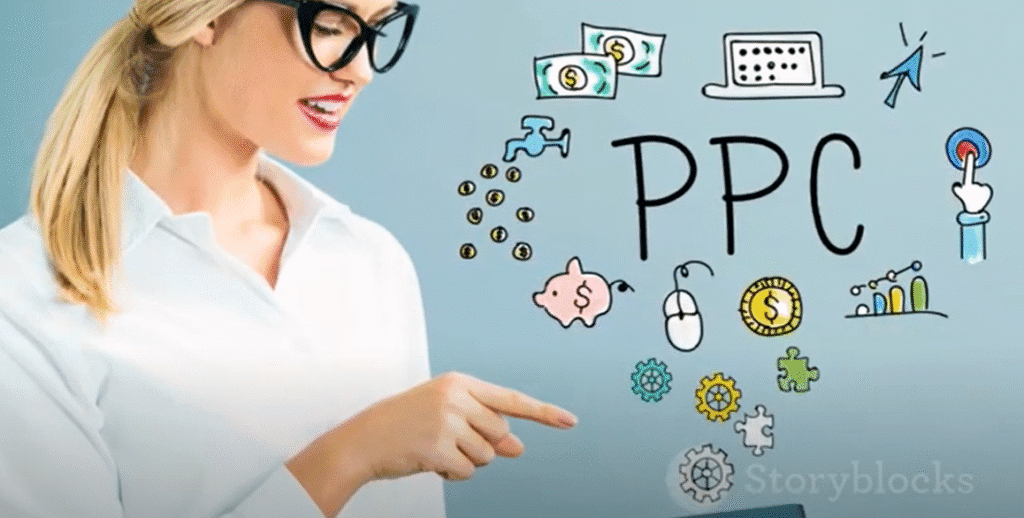Paid ads can feel overwhelming when you’re marketing technical or manufacturing products. But with the right approach, pay-per-click (PPC) advertising can unlock rapid growth, validate prototypes, and drive measurable results. In this beginner’s guide, we break down how PPC works, what platforms are best for B2B and industrial businesses, and how to avoid common pitfalls when promoting complex products.
Why Paid Ads Matter for Technical and Manufacturing Firms
Let’s face it—traditional sales methods in technical industries are slow and limited in reach. Paid ads, however, give you instant visibility. Whether you’re selling prototypes, high-ticket components, or engineering services, PPC helps you get in front of the right people at the right time.
Imagine this: someone searches “custom CNC machining for aerospace” on Google. Your ad appears at the top. If it’s relevant and well-written, they click. That’s a warm lead. PPC works because you’re targeting people actively looking for your solution.
Key Benefits:
- Speed: Launch a campaign today and get traffic tomorrow.
- Precision: Target specific industries, job roles, and regions.
- Control: Adjust budgets, test messaging, and optimize performance in real-time.
- Data: Track what’s working and double down.
Choosing the Right PPC Platform
Not all PPC platforms are created equal. Each one has its strengths depending on your goals, audience, and product complexity.
Google Ads
Google is the go-to for broad reach. You can target keywords like “industrial automation systems” or “prototype PCB assembly.”
Pros:
- Massive reach
- Flexible targeting options
- Great for intent-driven searchers
Cons:
- Can get expensive
- High competition in some sectors
Microsoft Advertising (Bing Ads)
Often overlooked, Microsoft Ads serve a different demographic—many engineers, corporate buyers, and decision-makers still use Bing.
Pros:
- Less competition
- Lower cost-per-click
- Seamless integration with LinkedIn for B2B
Cons:
- Smaller search volume
LinkedIn Ads
This is where B2B marketing shines. You can target job titles, industries, company sizes, and even specific companies.
Pros:
- Hyper-targeted
- Ideal for long sales cycles and niche technical products
- Great for brand awareness and lead generation
Cons:
- Higher cost per click
- Requires strong content offers (e.g., whitepapers, demos)
Building Effective PPC Ads for Technical Products
Writing ads for technical products isn’t about flashy copy. It’s about clarity, credibility, and solving real problems.
1. Make Your Ads Relevant
Use language that matches your customer’s search intent. Mention industry-specific terms and product features that matter.
Example:
“Titanium Machining for Aerospace | ISO 9001 Certified | Fast Turnaround”
2. Focus on the Headline
Your headline is prime real estate. It should highlight a unique benefit or call out the audience.
Example:
“Custom PCBs for Medical Devices – Quote in 24 Hours”
3. Clear Call to Action (CTA)
Tell users what to do next:
- Request a Quote
- Download Our Spec Sheet
- Schedule a Demo
4. A/B Test Continuously
Test different:
- Headlines
- Descriptions
- Landing pages
- CTAs
Targeting and Keyword Strategy
Use keywords that match both technical specifications and buyer intent.
Manufacturing-related keywords:
- Precision machining
- Sheet metal fabrication services
- Rapid prototyping for electronics
Sales-stage keywords:
- Request quote for plastic injection molding
- Best manufacturer for custom gears
Match Keyword Intent with Ad Copy
If someone is looking for “low-volume injection molding,” don’t show them a generic ad. Tailor your message.
Using Paid Ads to Validate Prototypes
One underrated PPC tactic? Use it to test market demand for new prototypes. Before ramping up production, create a landing page with basic specs and run ads targeting your ideal customer.
Track:
- Click-through rate
- Time on page
- Quote requests
If no one bites, that’s valuable feedback before you spend on manufacturing.
Metrics That Matter
You can’t improve what you don’t measure. Focus on these KPIs:
- CTR (Click-Through Rate): Shows how appealing your ads are.
- CPC (Cost Per Click): Helps manage budget.
- Conversion Rate: Measures how well your landing page turns visitors into leads.
- ROAS (Return on Ad Spend): Tells you if you’re making money.
Common Mistakes to Avoid
- Targeting too broad: Narrow your focus to specific industries or decision-makers.
- Sending traffic to a generic homepage: Always use landing pages tailored to the ad.
- Ignoring negative keywords: Filter out irrelevant traffic to save money.
- Skipping A/B testing: Your first ad likely won’t be your best.
Conclusion: Make PPC Your Technical Sales Secret Weapon
Paid ads are one of the most effective tools to boost visibility, drive qualified leads, and test demand in the technical and manufacturing space. When done right, they can validate your ideas, shorten sales cycles, and open doors to new clients you wouldn’t reach otherwise.
Whether you’re selling a new prototype or growing your CNC manufacturing sales, PPC gives you the power to be in front of the right customer at the right moment.
Ready to take your manufacturing sales to the next level?
Get started with a free PPC audit or consultation. Let’s optimize your campaigns and turn ad spend into revenue.
Check out more helpful tips on “The Weekly 5 Blog”.
OFFICIAL WEBSITE: https://InfinitySKS.com
CONTACT US: Sales@infinitysks.com
SOCIAL MEDIA:
- Facebook: https://facebook.com/infinitysks
- Instagram: https://instagram.com/infinitysks
- YouTube: https://youtube.com/@angellopezlive
- Twitter/X: https://twitter.com/infinitysks
- Pinterest: https://pinterest.com/InfinitySks
- Tumblr: https://tumblr.com/infinitysks

